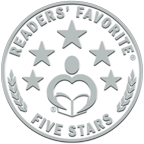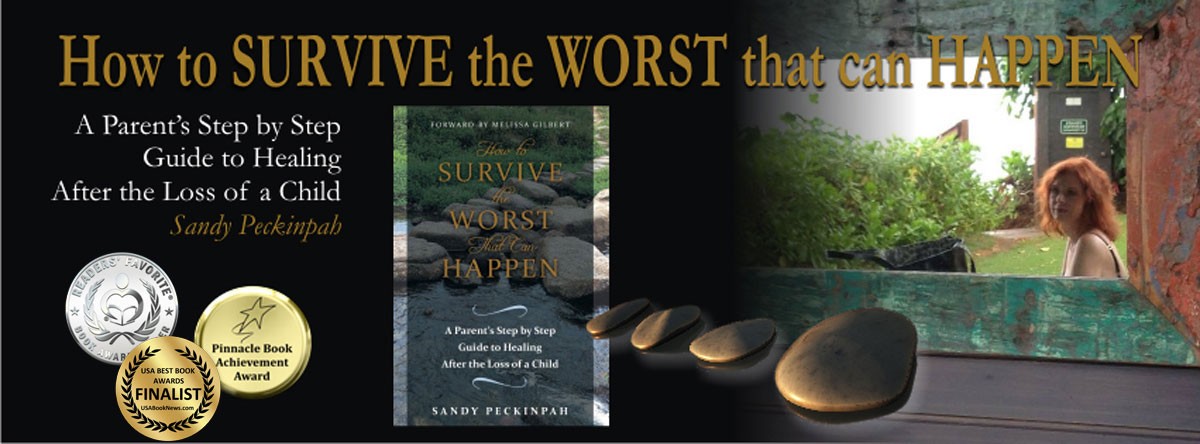How to Survive the Worst That Can Happen is a book that teaches you how to heal after losing a child.
Reviewed by Faridah Nassozi for Readers’ Favorite
 How to Survive the Worst That Can Happen: A Parent’s Step by Step Guide to Healing After the Loss of a Child by Sandy Peckinpah is a self-help book aimed at helping parents through their worst nightmare – the loss of a child. Everybody’s grief is different but in the end we all go through the same grief stages. Sandy gives you practical step-by-step techniques on how to live through these stages, what to expect, and how to heal. Through different techniques like expressing your feeling through writing, leaning on the love and support of your friends and family, sharing your story and many more, the book shows you how to live through this nightmare and finally move on with life.
How to Survive the Worst That Can Happen: A Parent’s Step by Step Guide to Healing After the Loss of a Child by Sandy Peckinpah is a self-help book aimed at helping parents through their worst nightmare – the loss of a child. Everybody’s grief is different but in the end we all go through the same grief stages. Sandy gives you practical step-by-step techniques on how to live through these stages, what to expect, and how to heal. Through different techniques like expressing your feeling through writing, leaning on the love and support of your friends and family, sharing your story and many more, the book shows you how to live through this nightmare and finally move on with life.
How to Survive the Worst That Can Happen is a book that teaches you how to heal after losing a child. Sandy Peckinpah starts the book off with her personal story, her own journey through the loss of her 16-year-old boy and this sets the mood right away for the book and creates that special connection with the reader. It is not about forgetting the past, but about the healing process through accepting the loss and moving on, keeping the memories of your departed child. Sandy’s words feel genuine all through the book, probably because she has been there and she is not just writing theories but tackling a topic that is very dear to her heart. It is simply amazing how she handles this very delicate subject in a way that is both sad and comforting; giving you hope that losing your child, as painful as it might be, is not the end of your life. It will hurt like hell and will change your life forever, but you will learn to live again.

Sandy Peckinpah has been through any parent’s worst nightmare.
Reviewed by Dr. Oliva Dsouza for Readers’ Favorite
 Sandy Peckinpah has been through any parent’s worst nightmare. Losing her son at the tender age of sixteen to an unexpected illness, within a day’s time was not what she had ever thought about. The sadness and overwhelming grief that she had to deal with makes her what she is today. Life’s true lessons are an outcome of tragedy. By sharing her life and helping a grieving parent to cope with life after the passing away of their child is what Sandy sets out to do with this book.
Sandy Peckinpah has been through any parent’s worst nightmare. Losing her son at the tender age of sixteen to an unexpected illness, within a day’s time was not what she had ever thought about. The sadness and overwhelming grief that she had to deal with makes her what she is today. Life’s true lessons are an outcome of tragedy. By sharing her life and helping a grieving parent to cope with life after the passing away of their child is what Sandy sets out to do with this book.
How to Survive the Worst That Can Happen: A Parent’s Step by Step Guide to Healing After the Loss of a Child by Sandy Peckinpah is a “must read” book for those of us who are struggling to cope with the most heartrendingly painful tragedy. Through her step by step approach, she guides you on maintaining a journal that will act as your best tool to survive and go on. Her compassionate approach helps one feel that things will someday get better. Her words of wisdom encourage you to believe that love and healing wait around the toughest corner. Just pick yourself up and rally all the help that you can to mend your way back to life. The loss of a child is unfathomable and one always wonders if it will ever make any sense. Sandy gives you the much needed hope and reassurance to fight your fears. She gently tells you to accept the loss and celebrate the life of your child. Remember the joy that your child brought into your life. Preserve the essence of your child’s presence in your life forever.

In Sandy Peckinpah’s book, you will learn how you can heal and eventually bring joy back into your life.
Reviewed By Deb Fowler for Feathered Quill
![]() Admittedly, Sandy was “caught up in the magic of fairy tales” and walked not only the literal Red Carpet with her husband, David, but also that of motherhood. As a mother she was a star among four beautiful, shining ones in her life, Garrett, Trevor, Julianne, and one-year-old, Jackson. Although there were whimsical and fleeting hopes that David would one day write a script that would launch the family into a real fairy tale existence, the day-to-day reminders like bills brought Sandy Peckinpah down to earth. A growing family couldn’t be fed on dreams and things like philosophical musings were best left to others.
Admittedly, Sandy was “caught up in the magic of fairy tales” and walked not only the literal Red Carpet with her husband, David, but also that of motherhood. As a mother she was a star among four beautiful, shining ones in her life, Garrett, Trevor, Julianne, and one-year-old, Jackson. Although there were whimsical and fleeting hopes that David would one day write a script that would launch the family into a real fairy tale existence, the day-to-day reminders like bills brought Sandy Peckinpah down to earth. A growing family couldn’t be fed on dreams and things like philosophical musings were best left to others.
Any dreams that Sandy may have had for a star-studded existence would soon be shattered. “Lots of fluids and ibuprofen to keep his fever down,” the doctor ordered. “He should be better in a few days.” Yes, as mothers we’ve all heard that before. Add a cool compress and a dollop of loving care and call the doctor in the morning. Instead, Garrett’s heart stopped suddenly during the night. A virulent case of undiagnosed bacterial meningitis shattered the family into a million pieces and a young soul had flown into the universe, never to return again. Sandy’s fairy tale existence had turned into a nightmare, one in which her child would be “16 years, three months, and ten days … forever.” Life would never, ever, be the same and the entire family was thrown into a deep abyss from which there seemed to be no return.”
Sandy explains everything from planning the service to those first steps of recovery to the ultimate end … healing. For those who are suddenly faced with a journey toward recovery they don’t wish to contemplate after the loss of a child, this book will be an immense comfort. How to Survive the Worst That Can Happen is not only a tribute to her own child, but one for every parent who has lost theirs. This book is a powerful, thought provoking, and singularly stunning guide to recovery. Read more…

A heartwarming tale of grief, healing and self recovery.
 Reviewed By Mamta Madhavan for Readers’ Favorite
Reviewed By Mamta Madhavan for Readers’ Favorite
How to Survive the Worst That Can Happen: A Parent’s Step by Step Guide to Healing After the Loss of a Child by Sandy Peckinpah is a story of grief, healing, and self recovery. Sandy Peckinpah loses her sixteen-year-old son to bacterial meningitis. She finds herself drowned in grief and despair and her life changes forever. She finds herself on the road to recovery when someone introduces her to writing. She discovers the magic of words and their power and it helps her to cope with the loss and live life without her son. The book tells readers how to handle loss, the stages of handling loneliness, and how to talk about your loss.
By sharing her story with readers, the author also shares an important part of her life with them. The book is sensitive and every reader who has undergone loss of a family member has something to gain by reading the author’s story. It teaches you to live despite the loss and the author puts it effectively: ‘The first step in your grief recovery is to take care of you.’ There is a lot of pain, and at the same time wisdom in these pages, and the book speaks about understanding and healing very effectively.
The book can be looked at as a guide, too, because it gives tips on self discovery, handling grief, and suggestions of activities that can take one on a road to self recovery.
